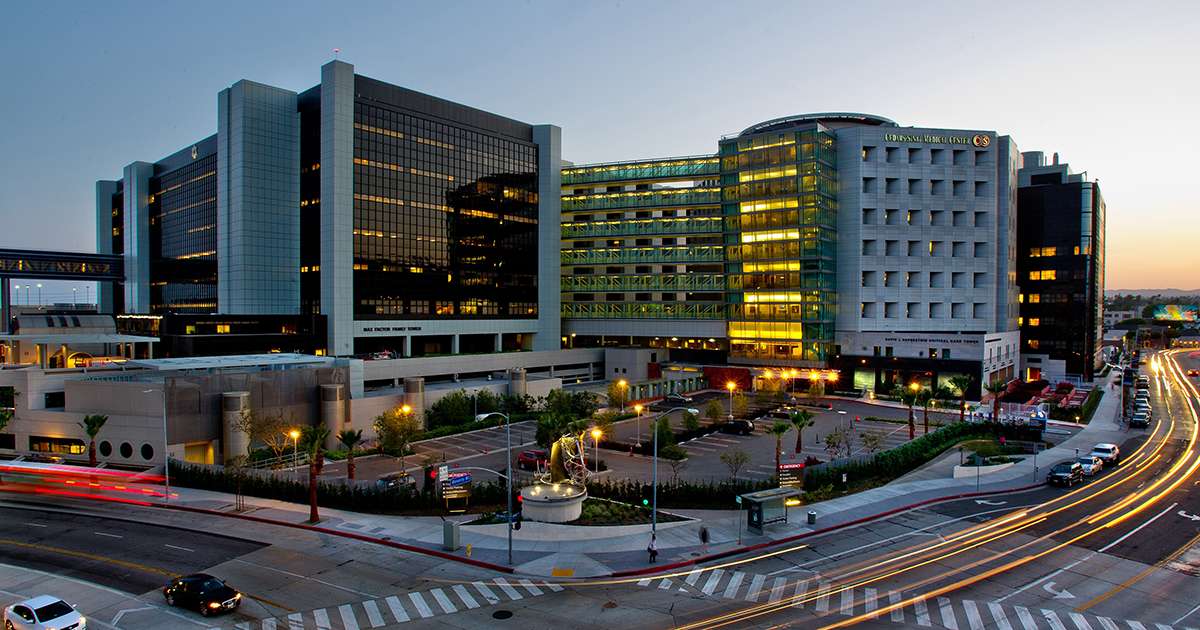What is a cardiac SPECT scan?
A SPECT scan of the heart is a noninvasive nuclear imaging test. It uses radioactive tracers that are injected into the blood to produce pictures of your heart. Doctors use SPECT to diagnose coronary artery disease and find out if a heart attack has occurred. SPECT can show how well blood is flowing to the heart and how well the heart is working.
Quick facts
- SPECT scans use radioactive material called tracers. The tracers mix with your blood and are taken up by living heart muscle.
- A special “gamma” camera picks up signals from the tracer as it moves around your chest. The tracer’s signals are converted into images by a computer.
- The pictures will help your doctor see if your heart is getting enough blood or if blood flow is reduced because of narrowed arteries.
- A SPECT scan can be used to examine blood flow in your heart at rest and during exercise (called a nuclear stress test). If you can’t exercise, you’ll get a medicine to increase the blood flow in your heart as if you were exercising (called a chemical or pharmacologic stress).
- SPECT scans can also give information about how well your heart is pumping.
Why do people have cardiac SPECT scans?
SPECT scans show areas of your heart that have low blood flow at rest or during exercise. This information helps your doctor find out:
- If you have coronary artery disease
- If you’ve had a heart attack and areas of scar tissue exist.
- How well bypass surgery or other cardiac procedures are working
- If you are having a heart attack and need more immediate tests such as a cardiac catheterization or percutaneous coronary intervention (PCI)
- If you are at risk of having a heart attack
How does a SPECT scan work?
A radioactive tracer is injected into your bloodstream. Inside your body, the tracer produces a type of energy called gamma rays. A gamma camera picks up signals from the tracer, and a computer converts them into pictures of blood flow through your heart. Images of thin slices made all the way through the heart can be produced from all different directions and angles. These images are examined for the location of the tracer. Computer graphics can be used to create a 3-dimensional image of your heart from the thin-slice images.
On the pictures, areas of your heart that have good blood flow will be light, and areas with poor blood flow will be dark. Many SPECT scans produce colored images. The different colors represent different amounts of tracer uptake.
SPECT scans can be done while you rest and during an exercise stress test (called a nuclear stress test). The stress test gives your doctor a better idea of how well your heart handles work. If you can’t exercise, you may get a medicine to increase the blood flow in your heart as if you were exercising. This is called a chemical or pharmacologic stress test.
- If the test is normal during both exercise and rest, blood flow through the coronary arteries is normal.
- The test may show normal blood flow (perfusion) at rest but not after exercise. This may be due to a blockage in one or more coronary (heart) arteries. A blockage can create a “perfusion defect” or an area where little to no uptake of tracer can be seen.
- The test may be abnormal during both exercise and rest. In this case, the tracer won’t be visible in an area. This means that not enough blood is flowing to that area of the heart at any time.
- Lack of tracer often means that the cells in that area are dead from a prior heart attack. (They have become scar tissue.)
By using specific radioactive tracers designed for this test, SPECT scans can also show how well your heart’s left ventricle (lower pumping chamber) is working.
Note: SPECT is a noninvasive nuclear imaging test. It uses radioactive tracers that are injected into the blood to produce pictures of the heart. The pictures will help your doctor see if your heart is getting enough blood.
What are the risks of cardiac SPECT?
Cardiac SPECT is safe for most people. The amount of radiation is small, and your body will get rid of it through your kidneys in about 24 to 72 hours.
If you’re pregnant or think you might be pregnant, or if you’re a nursing mother, tell your doctor before you have this test. It could harm your baby.
How do I prepare for cardiac SPECT?
- Tell your doctor about any medicines you take, including over-the-counter medicines, herbs and vitamins. The doctor may ask you not to take them before the test. Don’t stop taking your medicine until your doctor tells you to.
- Your doctor may also ask you not to have certain foods, such as caffeine-containing drinks, for 24 hours before your test. The test may have to be postponed or cancelled if you’ve had caffeine.
- Don’t eat, and drink only water for 4 to 6 hours before your test.
- Wear comfortable, loose-fitting clothing and comfortable shoes if you will have an exercise stress test.
What happens during cardiac SPECT?
A doctor and nuclear medicine technologist usually perform the scan in a hospital or clinic using special equipment.
- The technician will place small metal disks (electrodes) on your chest, arms and legs. The disks have wires that hook to a machine that records your electrocardiogram (ECG). The ECG keeps track of your heartbeat during the test and can be used to signal the camera when to take a picture.
- You’ll wear a cuff around your arm to track your blood pressure.
- The technician will put an intravenous line (IV) in your arm. The tracer will be injected through the IV.
- For a resting scan, you’ll lie on a table and a gamma camera will move around your chest and convert the tracer’s signals into pictures.
- For a nuclear stress test, you’ll either walk on a treadmill or ride on a stationary bicycle. Then you’ll again lie on the table for more pictures. If you can’t exercise, you’ll receive a medicine (chemical stress) through the IV to increase the blood flow in your heart similar to what occurs during physical activity. These medicines may include adenosine, dipyridamole (Persantine) or dobutamine. The tests may take between 2 and 2 1/2 hours.
What happens after my SPECT imaging test?
- You can usually go back to your normal activities right away.
- Drink plenty of water for the next couple of days. This will help flush the radioactive material from your body.
- Make an appointment with your doctor to discuss the test results and next steps.
How can I learn more about cardiac SPECT?
Talk with your doctor. Here are some good questions to ask:
- Why are you doing this test rather than a different one?
- What do I need to do to get ready for this test?
- When will I get the results of my test?
- Will I need to have more tests after this?
Overview
A nuclear stress test is an imaging test that shows how blood goes to the heart at rest and during exercise. It uses a small amount of radioactive material, called a tracer or radiotracer. The substance is given by IV. An imaging machine takes pictures of how the tracer moves through the heart arteries. This helps find areas of poor blood flow or damage in the heart.
A nuclear stress test is one of several types of stress tests. It may be done after a regular exercise stress test, or it may be the first stress test used. If you have coronary artery disease, a nuclear stress test can help your health care provider learn your risk of a heart attack or other heart event.
The test uses a positron emission technology (PET) scanner or single-photon emission computed tomography (SPECT) scanner.
Other names for a nuclear stress test are:
- Cardiac PET study.
- Cardiac SPECT study.
- Myocardial perfusion imaging (MPI) study.
Why it’s done
This test may be done if you are being treated for heart disease or you have symptoms such as chest pain or shortness of breath.
A nuclear stress test is often done to:
- Diagnose coronary artery disease. The coronary arteries are the major blood vessels that supply the heart with blood, oxygen and nutrients. Coronary artery disease develops when these arteries are damaged or diseased. A nuclear stress test can diagnose coronary artery disease and show how severe the condition is.
- Create a treatment plan. If you have coronary artery disease, a nuclear stress test can tell your health care provider how well treatment is working. The test also shows how much exercise your heart can handle. This information helps your provider choose the best treatment for you.
There is a problem with information submitted for this request. Review/update the information highlighted below and resubmit the form.
From Mayo Clinic to your inbox
Sign up for free, and stay up to date on research advancements, health tips and current health topics, like COVID-19, plus expertise on managing health.
ErrorEmail field is required
ErrorInclude a valid email address
To provide you with the most relevant and helpful information, and understand which information is beneficial, we may combine your email and website usage information with other information we have about you. If you are a Mayo Clinic patient, this could include protected health information. If we combine this information with your protected health information, we will treat all of that information as protected health information and will only use or disclose that information as set forth in our notice of privacy practices. You may opt-out of email communications at any time by clicking on the unsubscribe link in the e-mail.
Thank you for subscribing!
You’ll soon start receiving the latest Mayo Clinic health information you requested in your inbox.
Sorry something went wrong with your subscription
Please, try again in a couple of minutes
Risks
A nuclear stress test is generally safe. Complications are rare, but there is some risk. Complications might include:
- Irregular heartbeats, also called arrhythmias. Those that occur during a stress test usually go away shortly after exercising ends or the medicine wears off. Life-threatening ones are rare.
- Low blood pressure. Blood pressure may drop during or right after exercise. This might cause dizziness or fainting. The problem generally goes away after the exercise ends.
- Heart attack. Although extremely rare, it’s possible that a nuclear stress test could cause a heart attack.
Some people may have other symptoms during the test, including:
- Anxiety.
- Flushing.
- Headache.
- Nausea.
- Shakiness.
- Shortness of breath.
These symptoms are usually mild and go away quickly. Tell your care provider if you have any of these symptoms during a nuclear stress test.
How you prepare
Your health care provider tells you how to prepare for your nuclear stress test.
Food and medications
You may be asked not to eat, drink or smoke for a time before a nuclear stress test. You may need to avoid caffeine the day before and the day of the test.
Ask your provider if you need to stop taking any medicines before the test. Some medicines can interfere with some test results. Never change or stop your medicines without first talking to your health care provider.
If you use an inhaler for asthma or other breathing problems, bring it to the test. Make sure your health care providers know that you use one.
Clothing and personal items
Wear or bring comfortable clothes and walking shoes. Don’t apply oil, lotion or cream to your skin on the day of your nuclear stress test.
What you can expect
A nuclear stress test uses a substance called a radioactive tracer. It’s given by IV. Then the health care provider takes two sets of pictures of the heart — one at rest and another after exercise.
A nuclear stress test can take two or more hours. It depends on the radioactive tracer and imaging tests used.
Before
Your care provider asks questions about your medical history and how often and actively you exercise. This helps set safe limits for your exercise. Your provider also listens to your heart and lungs for anything that might affect your test results.
During
Exercise stress test

Exercise stress test
In an exercise stress test, sticky patches called electrodes are placed on the chest and sometimes the arms and legs. They record the heart’s rhythm. A health care provider checks the heartbeat while the person walks on a treadmill or pedals a stationary bike.
During a nuclear stress test:
- A cuff on your arm measures your blood pressure.
- Sticky patches on your chest, and sometimes your legs and arms, record your heartbeat.
A health care provider inserts an IV into your arm and injects a substance called a radiotracer. The substance is also called a radiopharmaceutical.
The substance may feel cold when it goes into your arm. It takes a few minutes for your heart cells to absorb it. Then you lie still on a table. The health care provider takes the first set of images of your heart.
The next part of the test often involves walking on a treadmill or riding a stationary bike. If you can’t exercise, you might be given medicine by IV that increases blood flow to the heart, just as exercise does.
When your heart rate peaks from exercising, the health care provider gives more radiotracer through your IV. Then the second set of images of your heart are taken. On the images, the radiotracer lights up areas of the heart that don’t get enough blood flow.
You may be asked to breathe into a tube during the test. This helps determine how well you breathe during exercise.
You can stop exercising anytime you’re too uncomfortable. Usually, you keep exercising until your heart rate reaches a specific goal or you get concerning symptoms. These symptoms might include:
- An irregular heart rhythm or other changes in your heartbeat.
- Dizziness.
- Moderate to severe chest pain.
- Severe shortness of breath.
- Unusually high or low blood pressure.
After
After the exercise is done, you might be asked to stand still for a few seconds and then lie down for a short while. Your health care provider continues to watch your heartbeat and breathing during this time.
After the test you can usually return to your usual activities unless your care provider tells you not to do so.
The radioactive tracer leaves the body in the urine or stool. Drink plenty of water to help flush it out of your system.
Results
Your health care provider compares the two sets of pictures taken during your nuclear stress test. The pictures show how blood flows through your heart while at rest and during physical activity.
Your care provider talks to you about your test results. The results could show:
- Typical blood flow during exercise and rest. You might not need any more tests.
- Typical blood flow during rest, but not during exercise. Part of the heart doesn’t get enough blood during exercise. This might mean there are one or more blocked arteries, which is coronary artery disease.
- Low blood flow during rest and exercise. Part of the heart doesn’t get enough blood at all times. This could be due to severe coronary artery disease or an earlier heart attack.
- Lack of blood flow in parts of the heart. Areas of the heart that don’t show the radioactive tracer have damage from a heart attack.
If you don’t have enough blood flow through your heart, you may need a test called coronary angiography. This test helps health care providers see blockages in the heart arteries.
If you have a severe blockage in a heart artery, you may need a heart procedure called angioplasty with stenting. Or you might need open-heart surgery, known as coronary artery bypass surgery.



